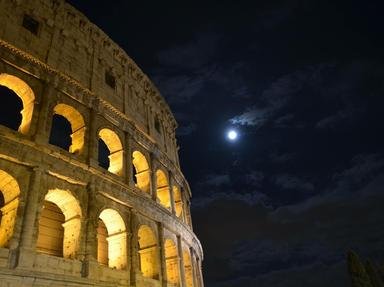
The Roman Provinces in Modern Times Quiz
The Roman Empire reached its largest territorial extent under Emperor Trajan in 117 AD. Many modern day countries include territory that was once part of the Roman Empire. Can you find them?
A collection quiz
by wellenbrecher.
Estimated time: 3 mins.